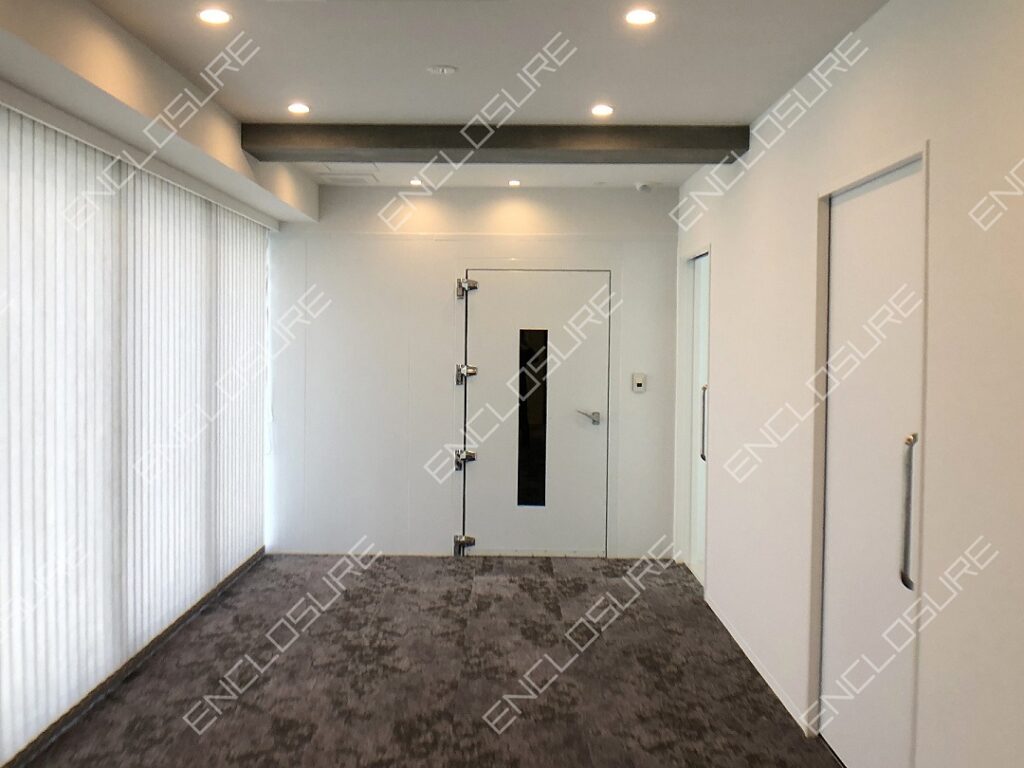How Is an Audiometric Room Different from an Anechoic Chamber? ─ Soundproofing Technology and Design Characteristics in Clinical Environments ─

Introduction | Similar Quietness, Different Objectives
While both anechoic chambers and audiometric rooms are designed to minimize noise, they differ significantly in purpose, acoustic requirements, and design methodology.
Anechoic chambers are primarily used for acoustic measurements and testing of equipment, whereas audiometric rooms are designed to provide a controlled quiet space for evaluating human hearing.
This article explores the technical distinctions between the two and outlines the unique soundproofing features required for audiometric room design.
Key Design Differences: Anechoic vs. Audiometric Rooms
| Criteria | Anechoic Chamber | Audiometric Room |
| Primary Purpose | Acoustic testing (equipment, speakers, etc.) | Accurate measurement of human hearing |
| Reflection Control | Fully anechoic (RT ≈ 0) | Partially absorptive (K2 ≤ 2.0 dB) |
| Sound Isolation | Extremely high, often building-scale | Sufficient for ≤25 dB SPL ambient noise |
| Absorptive Materials | Large wedges, including low-frequency treatment | Thin high-performance interior panels |
| Construction | Heavy, fixed, float-mounted structures | Modular, flexible installation options |
These differences highlight how each type of space is designed to meet distinct acoustic performance goals.
Soundproofing Technologies in Audiometric Rooms
1. Ambient Noise Control (Sound Isolation)
Standards such as JIS T 1201 and ISO 8253 recommend that audiometric test environments maintain ambient noise levels below 25 dB SPL, and ideally below 20 dB SPL.
Achieving this requires wall, floor, and ceiling assemblies with D-50 to D-60 level sound isolation, which can be accomplished using high-density, thin-panel structures.
Especially in medical facilities, thin but highly effective solutions are preferred to optimize room dimensions and space efficiency.
2. Internal Reflection Suppression (K2 Correction)
To ensure accurate hearing assessment, sound reflections within the room must be limited.
The K2 correction value—which verifies that sound levels decay as expected with distance—is a key parameter, with ≤2.0 dB being a common target.
This necessitates wall and ceiling surfaces that provide broadband, stable acoustic absorption, including effective performance in low-frequency ranges where human hearing is most sensitive.
3. Quiet HVAC and Ventilation Integration
HVAC and ventilation systems can introduce unwanted background noise.
To counteract this, designs typically include silenced ductwork, acoustically treated grilles, and low-noise fans, ensuring airflow without compromising quietness.
Unlike some testing environments where ventilation can be disabled during use, clinical settings require continuous operation, making quiet mechanical integration essential.
Operational Flexibility and Installation Considerations
Anechoic chambers are often permanent installations in large facilities with high structural demands.
Audiometric rooms, however, require greater flexibility, including:
- Modular or unit-type construction for clinics and medical buildings
- Adaptability to room constraints and pre-existing infrastructure
- Compliance with national or local healthcare facility standards
These factors make lightweight, scalable, and adaptable construction systems highly advantageous.
Conclusion | Quietness Tailored to Purpose
Both anechoic and audiometric rooms represent advanced acoustic environments—but they are designed for different types of quiet.
In audiometric rooms, the priority lies in ensuring test accuracy, patient comfort, and efficient installation.
Achieving this balance requires a comprehensive approach integrating sound isolation, absorption, HVAC design, and verification.
For those planning or upgrading clinical sound environments, an understanding of these distinctions is essential to ensure that the design meets both regulatory and operational needs.
